The United Caliphate of Córdoba splintered into independent kingdoms called taifas. Each competed with its neighbours for land, power and wealth.
By Nick Nutter | Updated 11 Apr 2023 | Andalucia | History |
Login to add to YOUR Favourites or Read Later
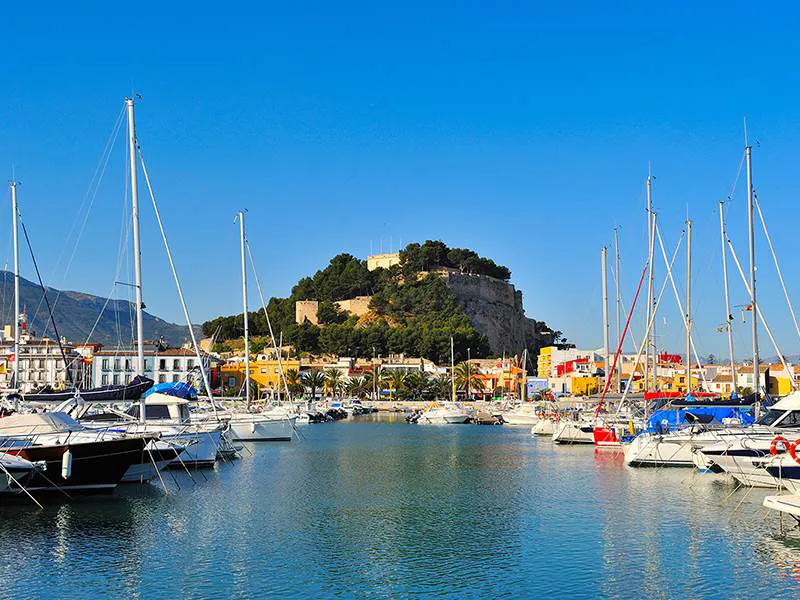
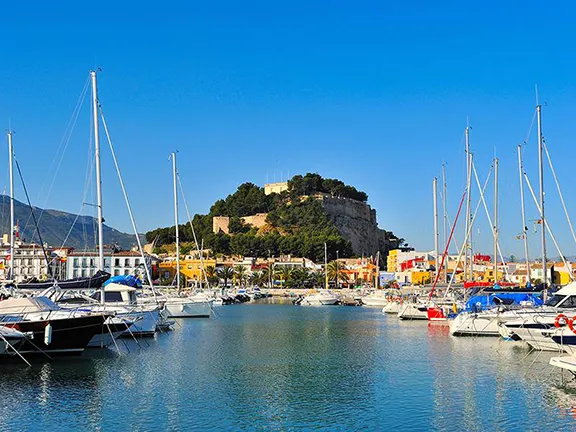
Alcazaba Denia
The Fitna of al-Andalus (1009 – 1031 AD – dealt with in the last article) resulted in the breakdown of the united Caliphate of Córdoba into independent Muslim kingdoms called taifas. In the Iberian Peninsula, thirty-three taifas condensed out of the anarchic soup, each vying with the next for territory, wealth and power and in many cases suffering from internecine strife within the taifa itself.
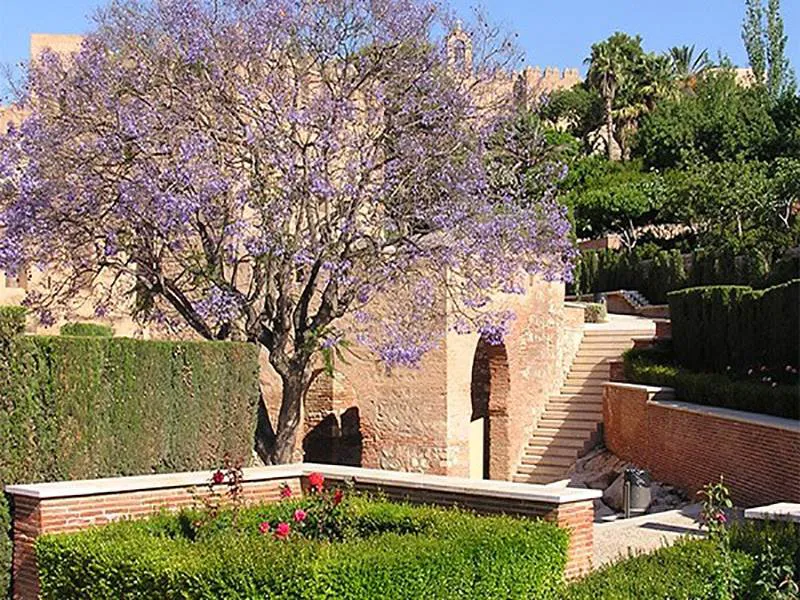
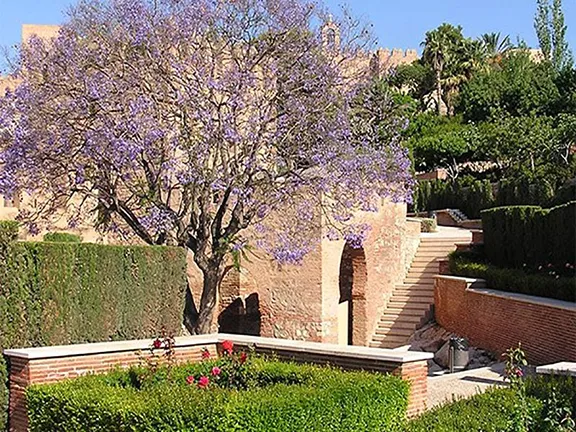
Alcazaba Almeria
The individual taifas were comprised and led by one or other of the social groups that had emerged since the original occupation in 711 AD. Those groups were:
1. the ruling Arabs who were in a minority
2. Berbers brought in as troops who far outnumbered their superiors
3. Iberian Muslims known as Muladi who made up a significant overall majority
4. Iberians who practised religions other than Islamic known as Dihimmis
5. Saqaliba or slaves, mainly from eastern Europe.
Many neighbouring taifas found themselves ideologically and politically opposed to each other, contributing to the overall disunity within al-Andalus.
The ruling Arabs managed to form taifas at Lisbon, Mértola, Saltés/Huelva, Algarve, Silves, Toledo, Córdoba, Niebla, Málaga, Zaragoza, Lorca, Mallorca, Murcia, Murviedro and Sagunto, and Seville.
The Berbers founded Albarracín, Alpuente, Arcos, Carmona, Granada, Morón, and Ronda.
The Iberian Muslims congregated at Algeciras, Rueda, Jérica, Molina and Segorbe.
The Saqaliba formed taifas at Dénia, Badajoz, Tortosa, Almería and Valencia.
Each taifa had a ‘king’, a muluk al-tawa'if, and they consolidated their kingdoms around existing towns and cities. Their loyalties were primarily to themselves, then their family although a bit of familicide was not uncommon.
Conversely, this period of Iberian history, though troubled, was also a time when the arts and science flourished since each taifa tried to outdo its neighbours in the splendour of its architecture, the size of its libraries, the quality and number of its tutors and students, (who were actively encouraged to come from all over the known world), and the quality and wealth of its exports, particularly exotic materials such as silk.
The history of the Málaga, Seville, Dénia and Granada taifas serves to illustrate the complexity of the internecine relationships that existed within the taifas during this period. The history of the individual taifas is a fascinating story of conquest, intrigue and alliances made and broken. It is a period when Christians both fought against and allied themselves with Muslim taifas and when Muslim battled Muslim.
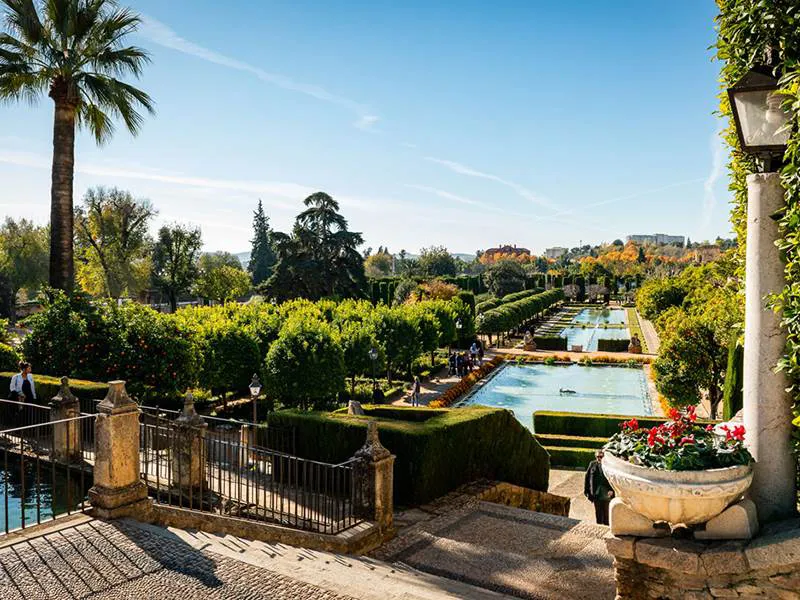
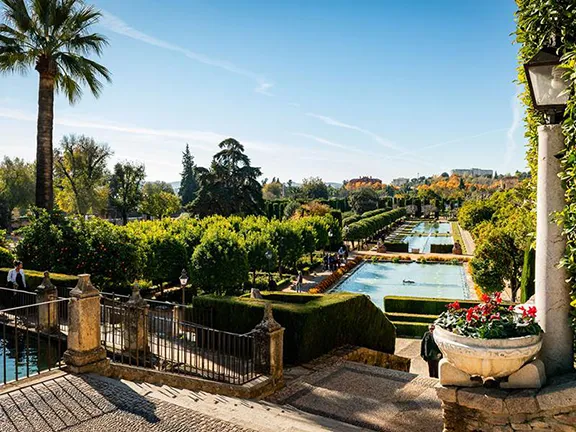
Alcazaba Cordoba
The Málaga taifa was created in 1026 when Yahya I al-Mu'tali, an Arab of the Hammudid dynasty who had been invited to assume the title of caliph of Córdoba, returned to his secure stronghold of Málaga after being banished by the Córdobans (themselves Arabs). After his expulsion, he united under his rule the coras (you would say municipalities today) of Málaga and Algeciras, initially with the support of the Zirids of Granada (Berbers), and thereupon declared the independent Taifa of Málaga. He regained the title of caliph, which became exclusive to the Málagan rulers. Yahya’s rule, which lasted until his death in 1035, was characterized by struggle with the Abbadid dynasty kings of the Taifa of Seville (Arabs). Yahya conquered the Taifa of Carmona (Berber) which was of strategic importance in the area; it was, however, soon recaptured by the taifa of Seville (Arabs).
After Yahya’s death in 1035, the kingdom was divided into two independent entities: the taifa of Málaga proper, under his brother Idris I al-Muta’ayyad, and the taifa of Algeciras, under his nephew Muhammad ben al-Qasim. The dispute with Seville was settled in 1039 at the Battle of Écija when the Málaga faction, supported by troops from the taifas of Almería (Arab), Granada (Berbers) and Carmona (Berbers) emerged triumphant. Idris I was succeeded by Yahya II al-Qa'im who only lasted one year to be replaced in 1040 by Hasan al-Mustansir, his Hammudid uncle. He, in turn, was overthrown by Saqaliba Naya al-Siqlabi in 1042.
Naya lasted less than one year before he was assassinated, and the Hammudids regained the throne with Hassan’s brother, Idris II al-Ali, who reigned until being deposed in 1047 by his cousin Muhammad I al-Mahdi. In 1053 the latter was replaced by his cousin Idris III al Sami, who was also assassinated after just one year, after which Idris II returned and held the throne until his death in 1054 or 1055. His son and successor, Muhammad II al-Musta'li, was deposed by his brother, Yahya III al-Mahdi who lost the taifa in 1057 to Badis ben Habus, Zirid ruler of Granada. In 1058, the taifa of Málaga was subsumed into the taifa of Granada.
Badis died in 1073 and the Granada taifa was divided between his successors, Málaga went to Tamim ben Buluggin ben Badis while Abd Allah ben Buluggin gained the taifa of Granada proper. In 1090, the taifa of Málaga was conquered by the Islamic Almoravid dynasty from Morocco.
Turmoil within a neighbouring taifa often allowed an ambitious neighbour to take advantage and some taifas expanded by absorbing their neighbours, often following bloody conflict followed by military rule. In this way some taifas became dominant. The Seville taifa is a good example.
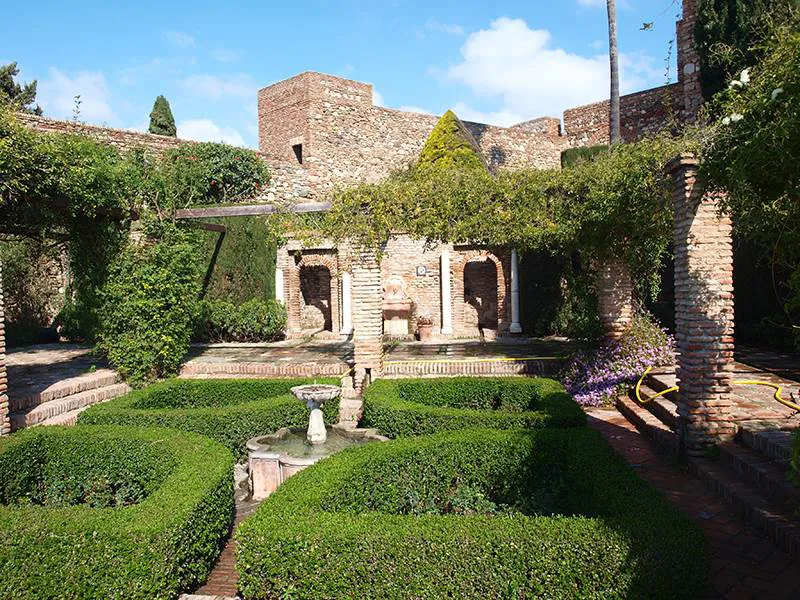
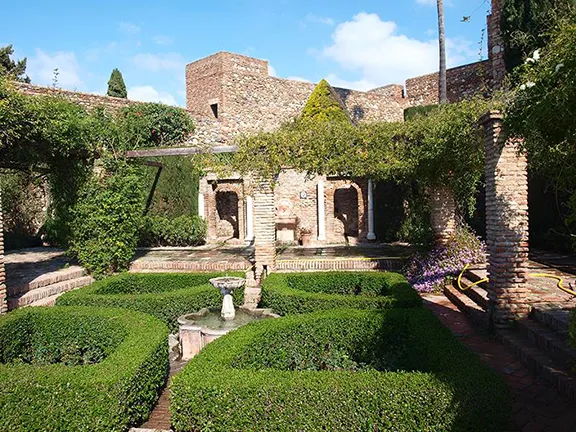
Alcazaba Seville
The first king of Seville was Abu al-Qasim (1023–1042). He was qadi of Seville and declared independence from the Caliphate of Córdoba after its downfall in 1031, becoming Abbad I, King of Seville. The second king was his son Abbad II al-Mu'tadid (1042–1069), the last king Muhammad al-Mu'tamid (1069–1091).
The kingdom started as a small, weakly-defended territory comprising parts of the modern Spanish provinces of Seville, Huelva, and Cádiz, but quickly emerged as the most powerful taifa of the time, after its rulers began pursuing a policy of expansion. After several military campaigns, the kingdom achieved dominance over all of western Andalusia and Murcia, gradually absorbing the taifas of Badajoz, Algeciras, Granada, Málaga, Mértola (1044 AD), Huelva (1051), Algarve (1051), Niebla (1053) Algeciras (1055), Silves (1063), Ronda (1065), Morón (1066), Carmona (1067), Arcos (1069), and even Córdoba itself (1070, lost in 1075 to Toledo but regained in 1077). The kingdom reached its largest territorial extent in 1078 AD with the capture of Murcia.
During their quest for territory, the Abbad family had formed an alliance with the Christian King of Castile. In return for an annual tribute, the infamous parias (see below), Castile would help defend the taifa of Seville. In 1085, al-Mu’tamid decided the tax was a drain on his resources and power and stopped the payments. Alfonso VI, King of Castile and León, who had already conquered Toledo, besieged Seville. Al-Mu'tamid asked help from the powerful Almoravid dynasty of Morocco against the Castilian king. The Moroccans established themselves at Algeciras, and after defeating the Christians occupied all the Islamic taifas, including, in 1091, Seville itself. After they ravaged the city, al-Mu'tamid ordered his sons to give up the royal fortress, the early Alcázar of Seville, in order to save their lives. Al-Mu'tamid was taken prisoner to Aghmat, in what is now Morocco, where he was executed in 1095.
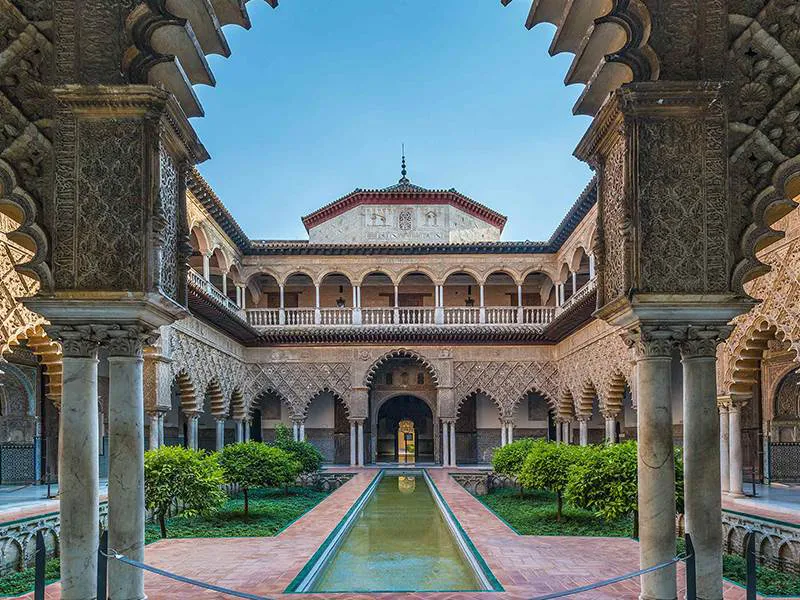
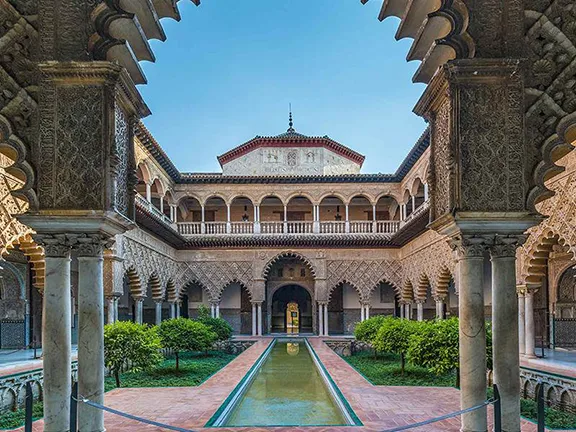
Alcazaba Seville
The Dénia taifa was one of the five established by Saqaliba or slaves. It was created in 1010 AD in the early days of the Fitna of al-Andalus, by the former court slave, Mujahid al-Amiri. He had been freed by his master, Al-Mansur Ibn Abi Aamir, and became a high functionary in the Caliphate of Córdoba. His was the first taifa to strike coins, in 1011 AD. Mujahid inherited a powerful navy that, in 1015, was used to control the Balearic Islands and then invade Sardinia. In the 1020s, the king of the Valencia taifa died and Mujahid took advantage of the power struggle that ensued to take over the southern part of that kingdom. Abd al-Aziz ibn Amir eventually became king of Valencia and was a constant threat to Dénia thereafter. Mujahid went on to support an internecine revolt in Murcia and then conquered that taifa followed by Lorca, Orihuela and Elche. It was only through the mediation of the king of Zaragoza in 1041 that a peace treaty was signed between the taifas of Dénia and Valencia.
During his reign and that of his successor, Ali Iqbal al-Dawla, his son by a Christian mother, the Christian and mercantile Jewish communities in Dénia were protected in return for their loyalty. The large fleet was used to expand the trading network that operated from the port at Dénia. As a result Dénia became a prosperous taifa and a target for their, formerly friendly, neighbours, Zaragoza who conquered Dénia in 1076 AD.
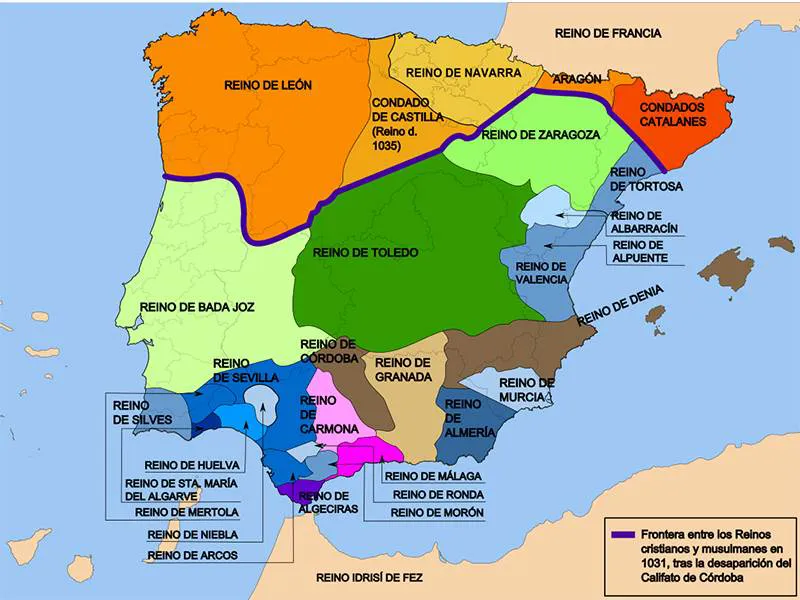
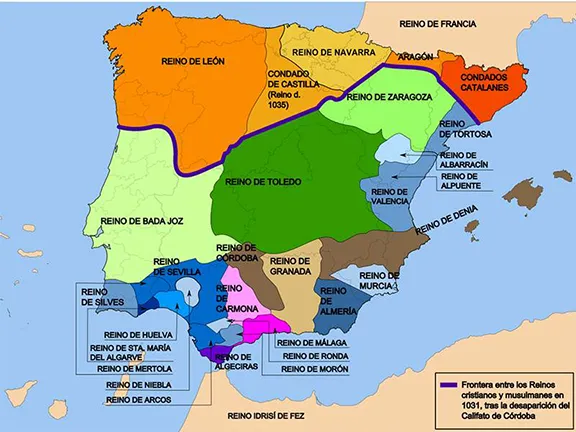
The Taifas
The taifa of Granada was unique in al-Andalus and the entire Islamic world. Its origins were in the Jewish township of Elvira. In 1010 AD, during the civil war that swept through the Caliphate of Córdoba, Elvira was destroyed at the same time as the ‘Shining City’, Madinat al-Zahra, by the Berber chief, Zawi ben Ziri. Under his leadership, in 1013 AD, the Jewish population relocated to Gharnata al-Yahud (Granada of the Jews), that later became the Realejo district of the city of Granada. The Ziri family only nominally ruled until the taifa was taken over by the Almoravids in 1091 AD. The real power within the taifa lay with the Jewish rabbi, scholar, poet, army commander and vizier, Samuel ha Nagid. As a result, Jews did not hold the diminutive dhimmi status typical of Jews in other taifas and they could hold high office. The Ziris themselves were more interested in ‘foreign’ military policy, supporting and eventually holding the taifa of Málaga.
About 1055 AD, Samuel was succeeded by his son, Joseph. Unfortunately, Joseph indulged in excesses, taking advantage of his position to favour his Jewish friends, to such an extent that a mob assassinated him on the 30th December 1066 AD. His body was crucified on the city’s main gate. The following morning, New Years Eve, the mob rampaged through Granada killing many Jews, an event now remembered as the ‘Massacre of Granada’s Jews’. Although reinstated some years later, the Jewish community never regained its power and it was virtually obliterated by the Almoravids in 1090.
With time, most taifas were absorbed or defeated by their larger Muslim neighbours, until there remained about six grouped around large cities: Zaragoza, Valencia, Toledo, Badajoz, Seville and Granada.
The turmoil within al-Andalus and between the taifas during this period gave the Christian lands to the north several opportunities to expand into the Islamic held territories. The problem the Christian kings faced was that they had neither the military power nor the excess population to inhabit and hold conquered territories. Their tactics evolved into armed incursions into enemy territory with the objective of taking a taifa capital. If successful, and not all were, the king of the taifa would be invited to pay a tribute, the parias. This could be a one-off payment or it could be an annual fee. In return the two kingdoms would become allies and the supplicant taifa would be offered military protection against their enemies, either Christian or Islamic. Sometimes, even the simple threat of an incursion would persuade a taifa king to pay a tribute. Threats of and actual incursions became so frequent that they gained their own name, a razzia (hence the modern term, ‘going on the razz’). The custom of extracting parias went on long after the Taifa period.
The parias led to a complicated web of alliances and treaties. The earliest known agreement was between the County of Barcelona (since the 10th century an independent state in conflict with the Caliphate of Córdoba) acting with the Kingdom of Aragon, and the taifa of Zaragoza. This early paria was known as the vetus paria. Later parias existed between Barcelona and Lleida, Zaragoza (again), and Tortosa.
The Aragonese king, Sancho Ramirez, took parais from Zaragoza’s vassal cities, Huesca and Tudela.
Ferdinand I of León and Castile had parias with Seville, Toledo and Zaragoza and possibly with Valencia and Badajoz. These recurring parias were passed on to his heirs along with parts of Ferdinand’s kingdoms so that his eldest son, Sancho II received Castile along with the vetus paria, the second son, Alfonso VI, received León with the parias of Toledo, and the third son, Garcia II, received Galicia along with the parias of Badajoz and Barcelona. Eventually, after 1065, all fell into the hands of Alfonso VI who also extracted parias from Granada.
In 1094 AD, Valencia fell into the hands of Rodrigo Diaz de Vivar, a Castilian knight and warlord, better known as El Cid, who was basically a mercenary who fought on either side depending on who paid most. Recovered by the Muslims in 1099 AD, the Valencia parias to Barcelona were reinstated. These parias were still being collected in the reign of James I, the Conqueror, when he became King of Valencia in 1238 AD.
The wealth from the parias found its way to the aristocracy and the church. None filtered through to the peasants and serfs. Ferdinand of León used some of his gains to finance the Abbey of Cluny, a tradition that was continued by Alfonso VI and did not cease until 1111 AD by which time parias revenues to Christian Spain had reduced to a trickle. They briefly recovered after 1246 AD when the Kingdom of Granada, by then the last remaining Islamic state in the Iberian Peninsula agreed to pay half its annual revenue to Castile.
So, whilst Christian territorial gains were modest, the coffers of the Christian kingdoms became enriched, some more than others.
Islamic law stipulated how much tax could be imposed on the communities within each taifa. Due to the payment of parias this limit had been exceeded in most of the taifas as the kings increased taxes on their subjects to pay the tribute to various Christian states. The general populations, encouraged by the legalistic party within each taifa, the faqihs, became increasingly discontent. This was aggravated by the lavish public outlays of the individual courts and the extravagant luxury in which the kings lived. Matters came to a head in 1085 AD when the Castilians occupied Toledo, the strategic key to the central meseta and the entire Iberian Peninsula. In response the kings called upon the Almoravids, the powerful Berber confederation that controlled North Africa, to help them save Islam, little realising they were to be the authors of their own demise.
The concept of paying a fee to avoid aggression was formalised in the parias. Parias were the brainchild of the Christian kings and allowed them to take tribute from the Muslim taifas in al-Andalus. Payment of the parias ceased during the 13th century. However the concept lived on and was adopted by the various pashas in North Africa from the 16th century until the early 19th century. The pashas harboured the ships of the Barbary pirates. In return the pirates paid the pashas a percentage of their loot. A straightforward tax in return for protection. However the pashas took it one step further and took fees directly from the maritime nations such as France and England in return for safe passage of their merchant vessels through the western Mediterranean. This practice came to an end when the combined efforts of America, France and the UK ended the scourge of the Barbary pirates in the 1830s.
Further reading and references
Barrucand, Marianne & Bednorz, Achim Moorish Architecture in Andalusia Cologne 1992
Dodds, Jerrilynn, Menocal, Maria R & Balbale, A K The Arts of Intimacy: Christians, Jews and Muslims in the Making of Castilian Culture New Haven, London 2008
Fletcher, Richard The Quest for El Cid London 1989
Fletcher, Richard Moorish Spain London 1992
Lomax, Derek The Reconquest of Spain London 1978
MacKay, A Spain in the Middle Ages: From Frontier to Empire, 1000-1500 London 1977
Vernet, Joan & Masats, Ramon Al-Andalus: El Islam en España Barcelona 1987